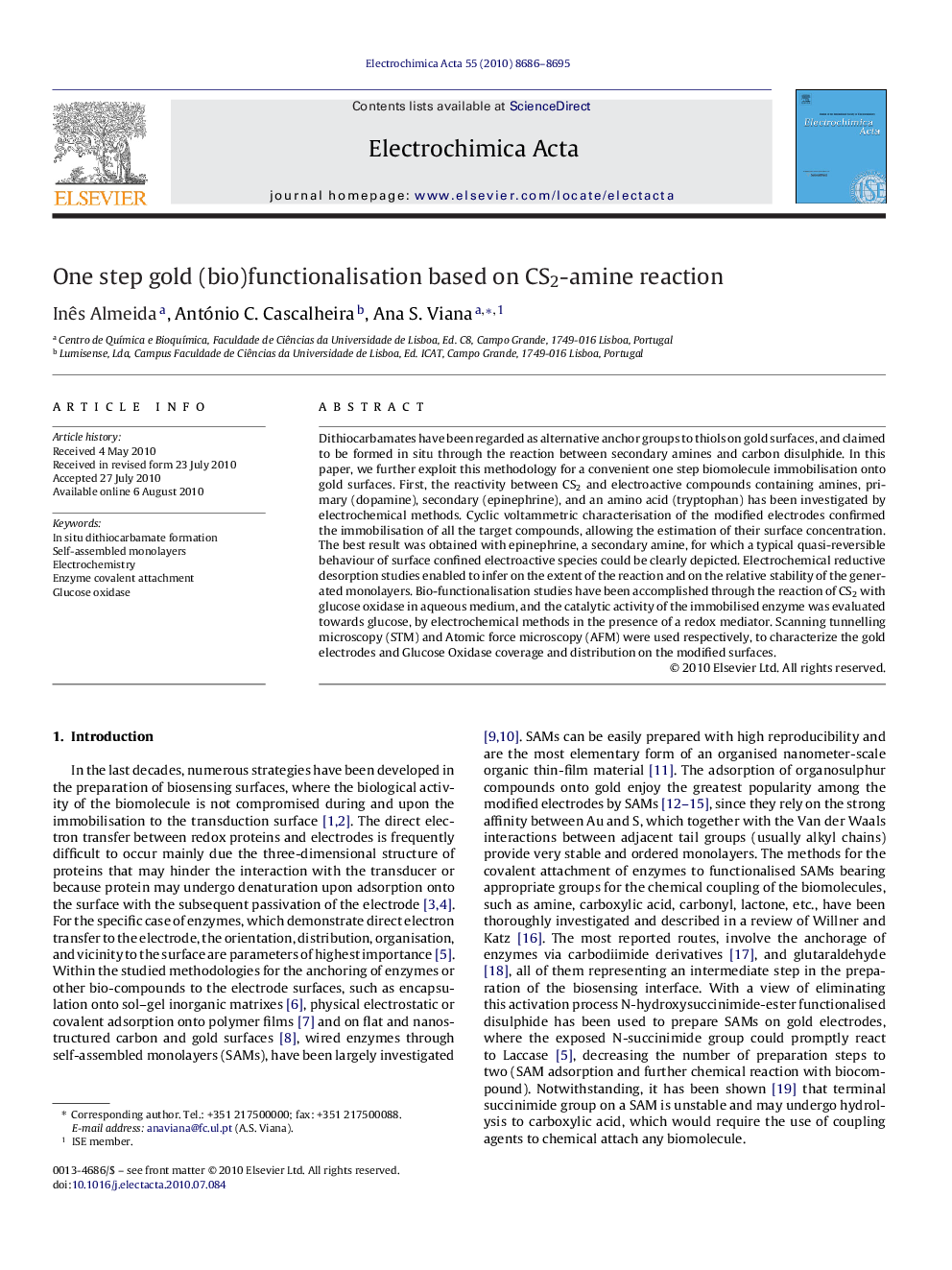| Article ID | Journal | Published Year | Pages | File Type |
|---|---|---|---|---|
| 190026 | Electrochimica Acta | 2010 | 10 Pages |
Dithiocarbamates have been regarded as alternative anchor groups to thiols on gold surfaces, and claimed to be formed in situ through the reaction between secondary amines and carbon disulphide. In this paper, we further exploit this methodology for a convenient one step biomolecule immobilisation onto gold surfaces. First, the reactivity between CS2 and electroactive compounds containing amines, primary (dopamine), secondary (epinephrine), and an amino acid (tryptophan) has been investigated by electrochemical methods. Cyclic voltammetric characterisation of the modified electrodes confirmed the immobilisation of all the target compounds, allowing the estimation of their surface concentration. The best result was obtained with epinephrine, a secondary amine, for which a typical quasi-reversible behaviour of surface confined electroactive species could be clearly depicted. Electrochemical reductive desorption studies enabled to infer on the extent of the reaction and on the relative stability of the generated monolayers. Bio-functionalisation studies have been accomplished through the reaction of CS2 with glucose oxidase in aqueous medium, and the catalytic activity of the immobilised enzyme was evaluated towards glucose, by electrochemical methods in the presence of a redox mediator. Scanning tunnelling microscopy (STM) and Atomic force microscopy (AFM) were used respectively, to characterize the gold electrodes and Glucose Oxidase coverage and distribution on the modified surfaces.
